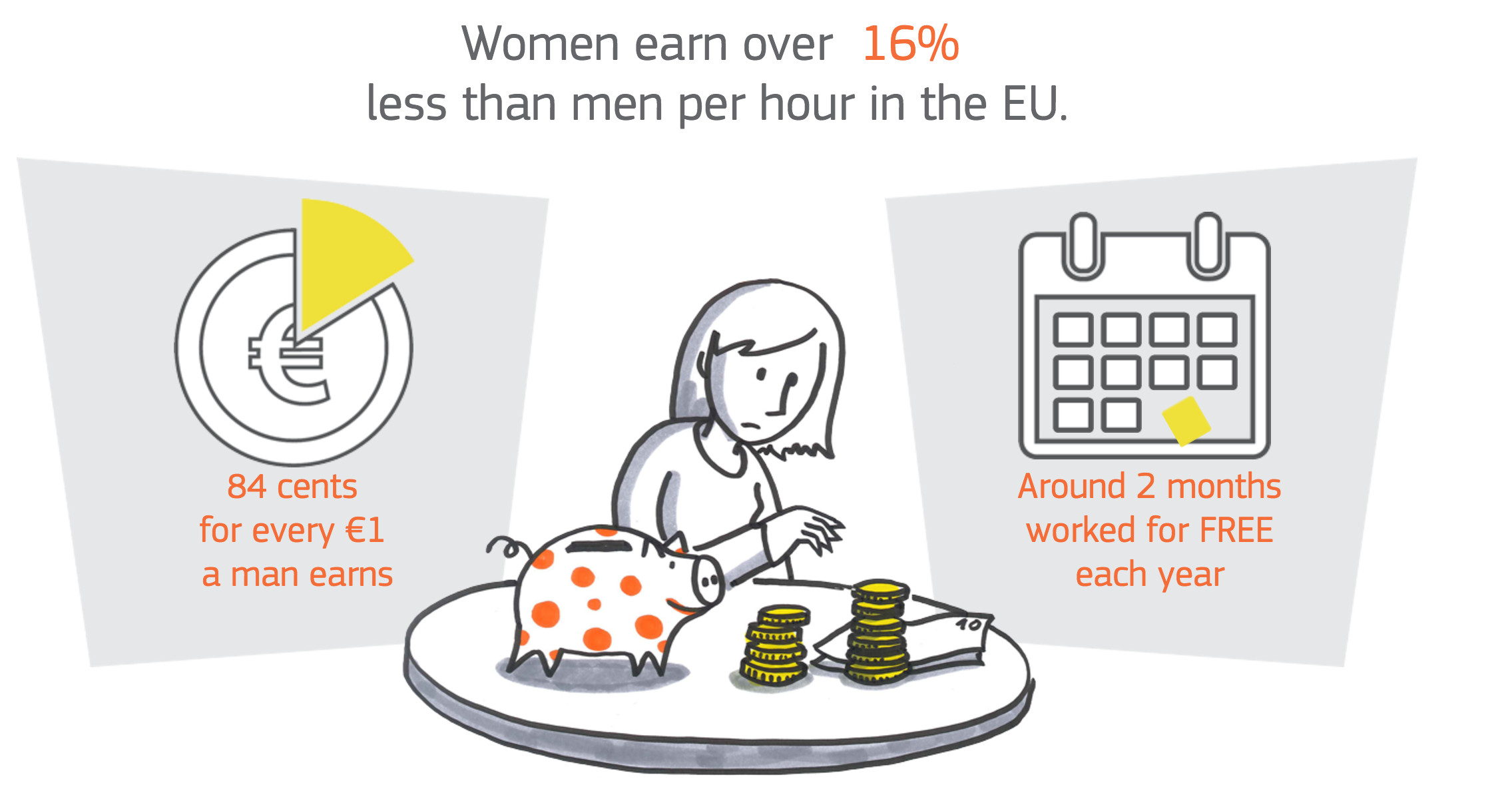
The gender pay gap is 16% in the Eu
In the European Union the gender pay gap stood at 16.1% in 2014. It was announced by Eurostat, the statistical office of the European Union, who published a selection of data on men and women with regard to their situation on the labour market, on the occasion of International Women’s Day. Eurostat announces, "women earned on average 84 cents for every euro a man makes per hour".
Across Member States, the gender pay gap in 2014 ranged from less than 5% in Slovenia and Malta to more than 20% in Estonia, Austria, the Czech Republic, Germany and Slovakia. Furthermore, comparing 2014 with 2015, it can be observed that the gender pay gap is growing.
Moreover, pay gap widens with number of children per woman. "With or without children, women are more likely to work part-time than men in almost all EU Member States" Eurostat explains. "However, the gap widens with the number of children". In 2014 nearly half of women workers between 25 and 49 years (45.1%) with at least three children have been working part-time, against 7.0% of men in the same situation.
"Women seize the opportunities and benefits of education and participation in the labour market, but they also face headwinds and gaps remain. Women are still less likely than men to be in paid employment, they tend to work less hours, they have lower hourly wages, and they are concentrated in fewer well-paid sectors. Women still face large barriers to advance into senior management. They are at risk of being harassed at work, at home or in the street. They are also the main victims of new forms of violence" stated Vĕra Jourová, Eu Commissioner for Justice, Consumers and Gender Equality introducing the annual report of the Eu Commission about gender equality, one of the main goal for the Eu.
The report, which quotes the ENEGE brand new data, includes also information about policies to reduce de gender pay gap. It is the case, for example, of the UK, where in 2015 the Government introduced an obligation for every company with more than 250 employees to publish the difference between the average pay of their male and female employees. "This is expected to increase pay transparency in large companies" the report said. "Over 7 850 organisations, which together employ more than 11.2 million staff (40 % of the UK’s workforce), will be affected".

To draw attention to the existence and the size of the gender pay gap, the Commission established an annual European Equal Pay Day in 2011. The day on which, symbolically, women ‘stop earning’ for the rest of the year. The fifth Equal Pay Day was marked on 2 November 2015. For the occasion, the Commission published information material, including country factsheets and an animated infographic which explains gender pay gap and dispels a series of clichés. Among them, the fact that it is not true that men earn more because they have higher levels of education. For the past 20 years, women have outnumbered men among new graduates and, as a consequence, female employees are now generally more educated than male employees. Without these educational achievements, reminds the Commission, the gender pay gap would be even wider.




